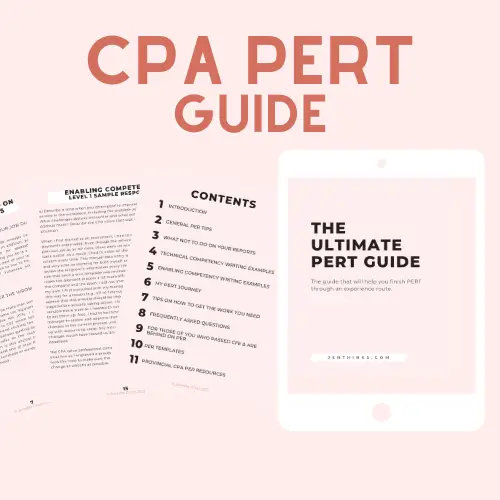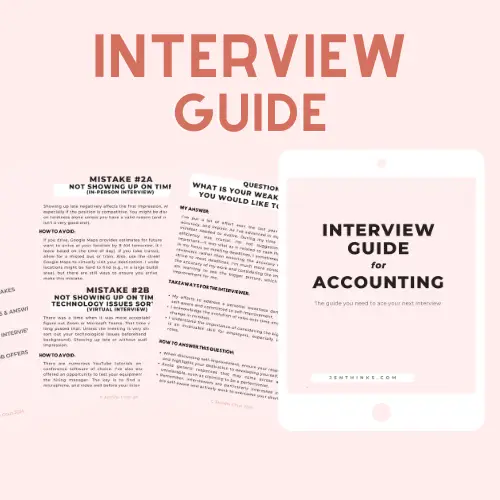The result of my Finance exam is coming out in less than one week and I was confident I passed after I wrote the exam. Luckily, my feelings didn’t change in the last 3 weeks (I went back and forth after I wrote Core 1 in Dec 2019) this time. For those of you who are considering taking Finance as your PEP elective or are studying for your Finance PEP exam when you found this, I hope this will be useful to you as a study guide. When possible, I have also included YouTube links that were useful to me during the course of the module. I do want to caution against relying on online videos completely as they might contain outdated or incorrect information.
Note, this is by no means an exhaustive list of topics to study for your Finance exam. As there were a number of topics I was familiar with from previous modules, I might have skipped reviewing those completely.
SUGGESTED – Densmore for CPA PEP – Are The PEP Essentials Packages Worth It?
As always, I recommend referring to the Competency Map published by CPA to help guide your study in addition to other supplementary resource such as this post.
For reference, I wrote the CPA Finance exam in December 2020.
List of Topics I Studied For CPA Finance Case-Only Exam
Financial Ratio Analysis
- this is a repeat from Core 2
- know how to perform vertical analysis, e.g., if gross margin improved, that means operating efficiency improved
- know the categories and ratios for each of them
- liquidity – current, quick
- asset turnover – AR turnover, average collection period, inventory turnover
- profitability – gross margin %, profit margin, return on assets, return on equity
- debt service – debt, debt-to-equity, debt service, AP turnover, days payable outstanding
- Youtube videos
Weighted Average Cost of Capital (WACC)
- this is a repeat from Core 2 but with advanced applications
- understand what WACC is by watching these two Youtube videos (#1, #2)
- know how to calculate WACC using the formula
- know when you use WACC for quantitative analyses
- know the concepts of leveraged and unleveraged cost of capital
- know the interrelationship of how debt, cost of debt, equity, cost of equity affect the cost of capital
Capital Cost Allowances (CCA)
- know when to use the Accelerated Investment Incentive (AAI) formula (video) and when to use the regular CCA formula
- know how to calculate tax shields and foregone tax shields
- Youtube video
RELATED READ – My CPA Journey – What I Think Went Well With Finance Module & Exam
Operating Cash Flow & Cash Flow Forecast
- understand what operating cash flow is (this video would help) and how to calculate operating cash flow
- know how to prepare cash flow forecast and how to forecast the amount of excess cash/financing requirement (total liabilities + shareholders’ equity – all assets except for cash)
- YouTube videos
Investment Portfolio Analysis
- be familiar with gross vs. net return, management fee & net asset value
- understand what volatility means for a portfolio
- know how to evaluate a portfolio against some sort of policy (e.g., do not hold less than 15% of bonds)
~ More CPA Posts ~
CPA PEP Core 1 – How to Study for the Module and the Exam
CPA PERT – Ultimate Guide on How to Get Your First Experience Report via EVR Approved
CPA PERT – Enabling Competencies Examples
Densmore for CPA PEP – Are The PEP Essentials Packages Worth It?
CPA PEP Module – Regular Module or Extended Module?
Financing Options
- this is a repeat from Core 2 but with advanced applications
- Discuss financial impact first, e.g., loan amount, interest expense
- Discuss qualitative pros and cons for each option
- Provide a supported recommendation by tying back to the pros while offering ways to mitigate risks
RELATED READ – My CPA Journey – 1 Month Before My Finance Exam
Risks & How to Mitigate Risks
- know how to analyze risks using the “Risk, Analysis & Recommendation” format
- know the different types of risks, e.g., foreign currency risks, commodity risks etc
- know how to mitigate risks, e.g., options, futures contracts etc
- Youtube videos
Net Advantage Leasing (NAL)
- know how to perform the NAL calculation to determine quantitatively if purchasing or leasing is the better option
Expansion Analysis
- know what goes into analyzing expansion options
- the quantitative calculation (e.g., cash flow requirements to pay interests and principal, the book value of equity for the owners), risks, qualitative discussion (e.g., visions/mission/values, ownership structural change)
SUGGESTED READ – CPA PERT – Ultimate Guide on How to Get Your First Experience Report via EVR Approved
Valuations
- know how to value a business/proposal with
- capitalized cash flow (video)
- discounted cash flow
- capitalized earnings
- discounted earnings
- net adjusted assets
- know how to compare proposals after using different methods to value then, e.g., net adjusted assets approach for Proposal A and capitalized cash flow approach for Proposal B
- YouTube videos


